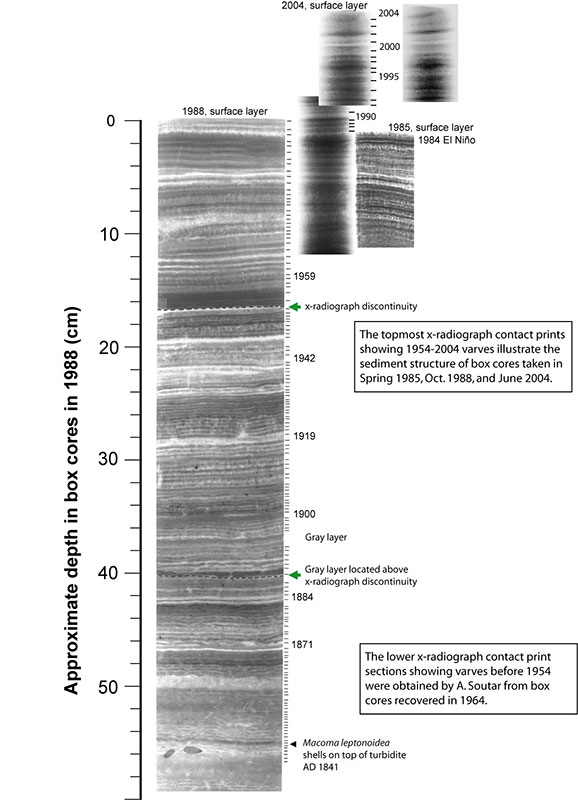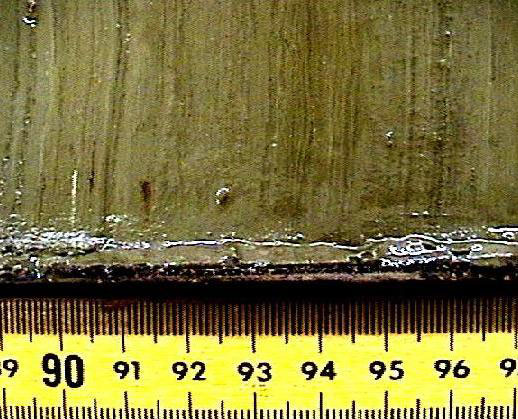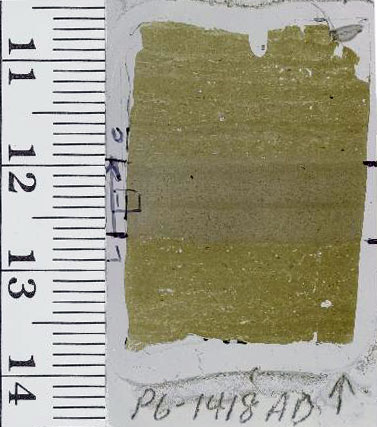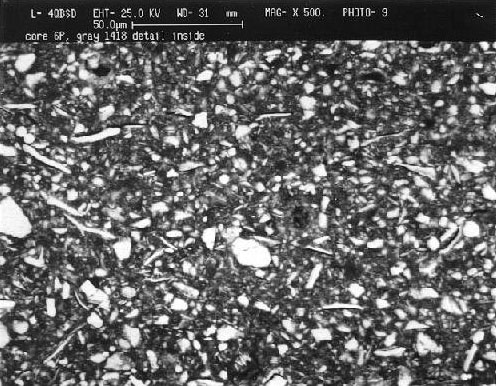My research in paleoclimatology has primarily utilized the laminated sediment record of the Santa Barbara Basin where sedimentological and geochemical features can be interpreted in the context of climate change. The laminations are annual varves from the present back to ca. 1700 AD.

In 2006 my colleagues and I published an overview and update on the chronostratigraphy of the past ca. 6000 years of sedimentation, together with a detailed X-radiographic record. Recently we published an update on the chronostratigraphy of the past ca. 2000 years in Quaternary International (Hendy et al., 2013) and in GFF (Schimmelmann et al., 2013). Prior to ca. 1700 AD, all earlier 'varve-count'-derived ages had to be revised because the sediment was not continuously varved.
A near-comprehensive list of varve-related publications, including work on varved Santa Barbara Basin sediment, was published by Schimmelmann in 2012.
The image on the right gives an example of varved sediment ca. AD 1830 - 2004 (note that the Macoma layer below 1841 AD is homogeneous).
Source: Schimmelmann, A., C.B. Lange, E.B. Roark, and B.L. Ingram (2006) Resources for paleoceanographic and paleoclimatic analysis: A 6,700-year stratigraphy and regional reservoir-age (ΔR) record based on varve counting and 14C-AMS dating for the Santa Barbara Basin, offshore California, USA. Journal of Sedimentary Research 76, 74-80. Link to article Additional correlation graphs are available at the SEPM Data Archive.
Laminated Sediment Record of the Santa Barbara Basin





Backscattered electron microscopy images showing the upper and lower boundaries of a flood deposit. The lower boundary is relatively sharp wheresas the upper boundary is somewhat diffuse. Note the absence of marine microfossils in the flood deposit, in contrast to the regular varved sediment above and below. The width of the images is about 3 millimeter. (Images provided by Carina Lange, Scripps Institution of Oceanography).


